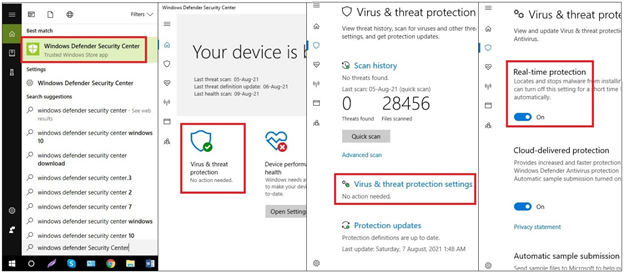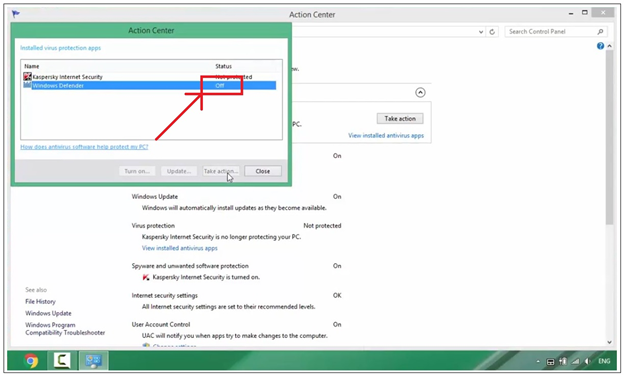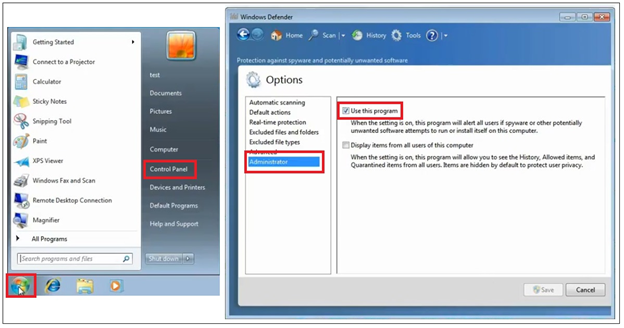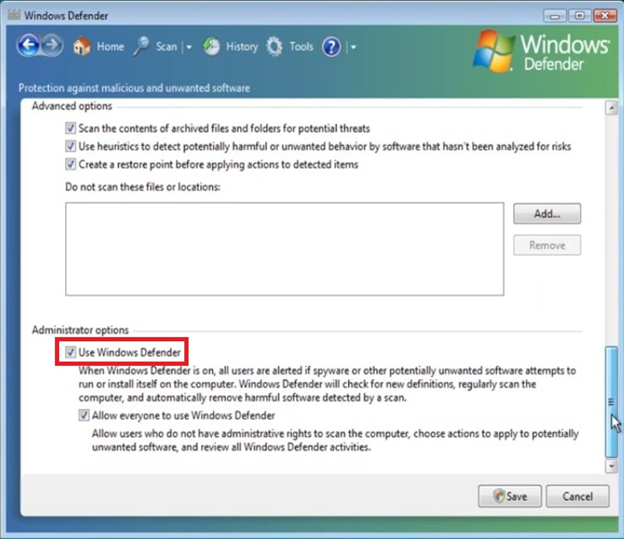In the last few months, there's been a surge in a ransomware attacks. This ransomware, mainly known as WannaCry and WannaCrypt, targets computers running Windows OS and encrypts their data with strong encryption thus demanding ransom to be paid before the decryption key is provided. But what if you find yourself in a situation wherein your computer is affected by such attack? There are certain things that you can check on your computer to determine if your computer has been affected and how you can check if Windows Defender is turned on.

Windows Defender is a handy tool that protects your computer from potential threats, different malware, and harmful applications. It is available to download for Windows XP, Vista, and 7 and comes built-in with Windows 8.1 and Windows 10.
Windows XP is an ancient operating system and is hardly used nowadays, and I will show you how to check if windows defender is on for Windows Vista, 7, 8/8.1, and 10 in this article.
Checking in Windows 10
Do the following in Windows 10:
- Click on the start button and open the settings.
- Open the “Update & Security” settings.
- From the list on the left, open the “Windows Defender” panel.
- Click the “Open Windows Defender Security Center” button.
- Alternatively, you can use Windows 10’s search tool or “Cortana” to search for windows defender security center and directly open it from there.
- Now click on “Virus & threat protection” and then on “Virus & threat protection settings.”

If the button under “Real-time protection” is enabled, this means windows defender is on in windows 10.
Checking in Windows 8 or 8.1
To check whether Windows Defender is on or off in Windows 8 or 8.1, do the following:
- Open the control panel of Windows 8 or 8.1.
a. Search for the control panel in the start menu search option.
b. Click the down arrow on the start screen and open the control panel from the list of apps and tools. - Search and open “Action Center” from the control panel.
- Open the “Security” drop-down menu.
- Under the “Virus protection” section, click on “Turn on messages about virus protection.”
- A new message will open with the button “Take action.”
- Click on “View installed anti-virus apps” under the “Take action” button.

A pop-up window will open and show the “On/Off” status for Windows Defender. If there is another anti-virus software, the Windows defender will most likely be off.
Checking in Windows 7
To check in Windows 7:
- Open the control panel from the Start menu of Windows 7.
- Find “Windows Defender” from the control panel and open it.
- Click on “Tools” from the top menu panel to open “Tools and Settings.”
- Under the “Settings” section, click on “Options.”
- Click on “Administrator” from the list of all options.

If you see the box beside “Use this program” is checked, this means the Windows Defender is on in Windows 7.
Checking in Windows Vista
Here is the process to follow:
- Go to “All Programs” from “Start.”
- Open “Windows Defender” from the programs’ list.
- From the top menu, click on “Tools” to open “Tools and Settings.”
- Click on “Options” from the “Settings” section.
- Scroll down and find the “Administrator Option” section.

If the checkbox beside “Use Windows Defender” is checked, this means the Windows Defender is on.
Checking Using the Task Manager
You can use the Task Manager in any Windows OS and check if the defender is running.
- Open the Task Manager.
a). Right-click on the taskbar and open from there.
b). Use “CTRL + ALT + Delete” button from the keyboard. - Go to the “Details” tab from the top menu.
- Look for a program called “MsMpEng.exe.”
If the “Status” column shows that it’s “Running,” it means the Windows Defender is on.
Summary: Check If Windows Defender Is On
- Open Windows Defender Security Center.
- Click on Virus & threat protection.
- Under the Virus & threat protection settings, you should see Real-time protection, Cloud-delivered protection, and Automatic sample submission.
- The first option should be On. If not, click it to turn it on.